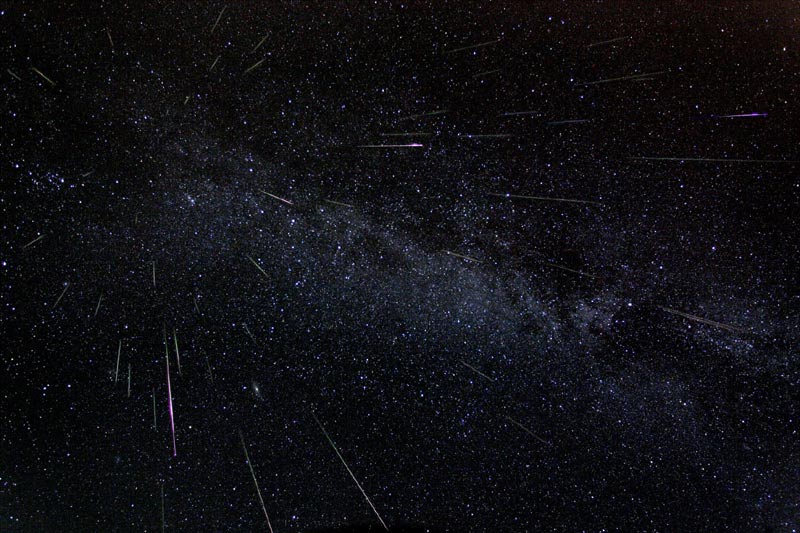Lyrid Meteor Showers Peak Tonight: Oregon, Washington, Coast
Published 04/21/2020 at 5:54 AM PDT
By Oregon Coast Beach Connection staff

Includes exclusive listings; some specials in winter
In Cannon Beach:
Includes rentals not listed anywhere else
In Manzanita, Wheeler, Rockaway Beach:
Some specials for winter
In Pacific City, Oceanside:
Some specials for winter
In Lincoln City:
Some specials for winter
In Depoe Bay, Gleneden Beach:
Some specials for winter
In Newport:
Look for some specials
In Waldport
Some specials for winter
In Yachats, Florence
Some specials for winter
(Portland, Oregon) – Little do many of us in the Pacific Northwest know, but we’re smack dab in the middle of the Lyrid meteor showers right now, with the peak coming in the overnight hours on Tuesday through Wednesday morning for Washington and Oregon residents. Those in places like Seattle, Portland, along the Washington coast and the Oregon coast could be getting quite a show, with as many as 10 to 15 big darts of light per hour. (Photo above courtesy NASA)
However, the weather outlook for Washington, Oregon and their coastline areas don’t look good for this.
The Lyrids hit their peak late on April 21 and into the predawn hours of the 22nd. Already, some enormous globs of light piercing through the atmosphere have been spotted: Oregon Coast Beach Connection saw a few earlier this week while trying to photograph the SpaceX Starlink swarm of satellites in Portland and the conjunction of the moon with three planets.
This particular set of meteor showers has been known to fire off some 60 to 100 meteors per hour, if it’s a big year for them. This year isn’t the case, however. Moreover, those crystalline clear night skies that inland Oregon, Washington and their coastal areas have experienced on and off this week are gone for awhile. However, weather forecasts are indicating mostly cloudy skies (along with showers) for Tuesday and Wednesday night, which should give stay-at-home stargazers some hope for breaks in the cover.
Helping things along is the lack of a moon, which will leave light pollution as the primary issue for the observer – aside from weather. The meteor shower will be visible until April 25, however.
According to Jim Todd of Portland’s OMSI, you’ll want to get away from city lights as much as possible, as with any meteor shower.
All of this sparkly stuff in the skies is coming from the Earth entering a stream of debris from Comet Thatcher. Those little bits of comet burn up in the atmosphere about 60 miles above us (a little farther than the drive from Portland to Salem). They come through at around 110,000 miles per hour.
Some years, this has meant incredible silent fireworks.
“Occasionally, Earth passes through a dense region of the comet's tail and rates surge five- to ten-fold,” Todd said. “In 1982, for instance, observers were surprised by an outburst of 90 Lyrids per hour. Because Thatcher's tail has never been mapped in detail, the outbursts are unpredictable and could happen again at any time.”
Todd handed out an interesting tip regarding watching these stellar streaks.
Also See: Satellite Swarms Create Otherworldly Light Shows Above Oregon, Washington, Coastlines
“Meteor watching is an unaided-eye event but binoculars are handy for watching trails (persistent trains) that may hang in the sky for one or more seconds after a meteor's passage,” he said. More Oregon astronomy photos below:
Cannon Beach Lodging
Nehalem Bay Lodgings
Manzanita Hotels, Lodging
Three Capes Lodging
Pacific City Hotels, Lodging
Lincoln City Lodging
Depoe Bay Lodging
Newport Lodging
Waldport Lodging
Yachats Lodging
Oregon Coast Vacation Rentals
Oregon Coast Lodging Specials


More About Oregon Coast hotels, lodging.....
More About Oregon Coast Restaurants, Dining.....
LATEST Related Oregon Coast Articles
Through 2 a.m. likely best, but some lights possible through dawn June 1 - 2. Space weather, astronomy
Rare Sperm Whale Stranding on N. Oregon Coast, Was Hit by Boat
Showing up near Gearhart, it will decompose naturally. Marine sciences
Coast Guard Barque 'America's Tall Ship' Coming to Portland Rose Fest, N. Ore...
Portland events: June 5 - 8; Astoria events June 13 - 15. Weather
Bright and Active Arietids Meteors May Hit Pre-Dawn Hours of Oregon, Washingt...
Look to east hour before sunrise and you may catch a show. Sciences, astronomy, weather
Why Now Could Be a Great Week for Spotting Killer Whales on Oregon Coast - Video
A good dozen documentations around Depoe Bay, Newport, Coos Bay, Bandon, Tillamook. Marine sciences
Summer Road Work, Traffic Issues Along Oregon Coast Include Astoria, Garibald...
Some daylight closures include bridges, OR 22, OR 18, OR 26, more. Travel tips. Seaside, Cannon Beach, Lincoln City. Travel tips
Pacific City Oregon Weather, 7-Day Forecasts, Live Conditions, Radar, Webcams...
Updated Constantly: Pacific City, Tierra Del Mar, Oregon Weather, Cams, Buoy Observations, Tides, Warnings - Alerts
Oregon Coast Has World's Oldest Harbor Seal, Celebrating 50 Years Soon
June 3 at Oregon Coast Aquarium in Newport. Newport events
Back to Oregon Coast
Contact Advertise on BeachConnection.net
All Content, unless otherwise attributed, copyright BeachConnection.net Unauthorized use or publication is not permitted
















































